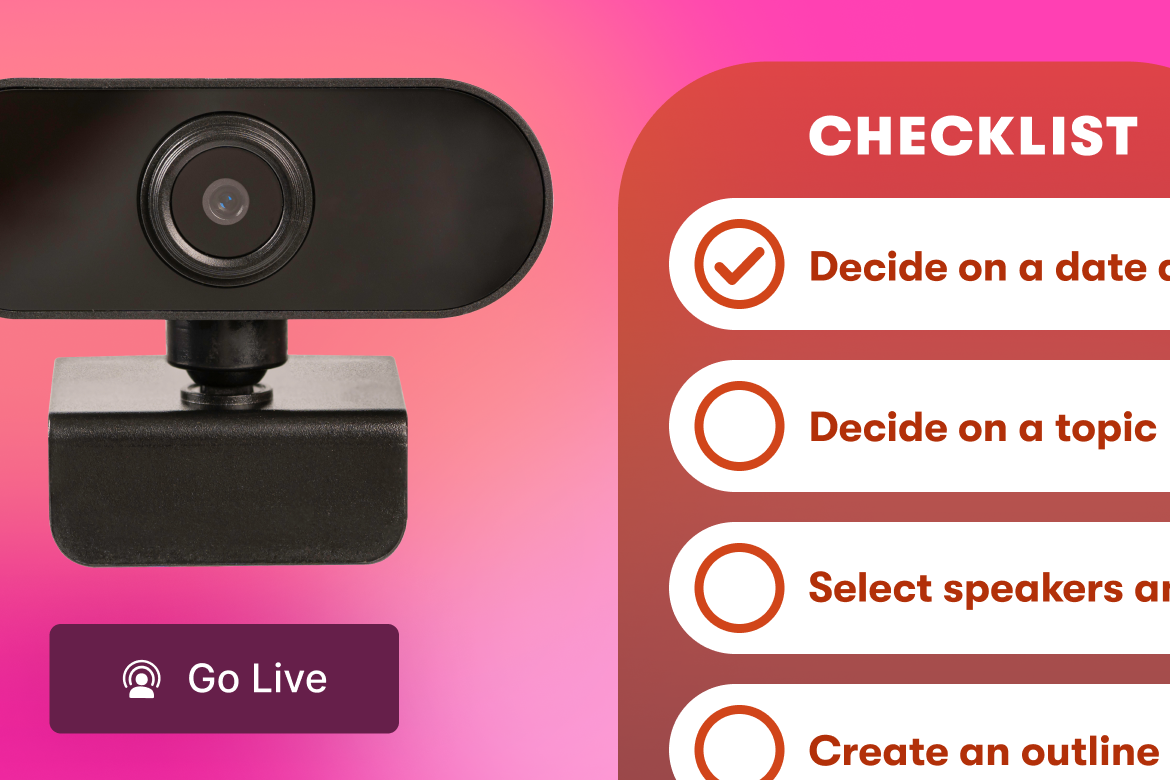The Guide to Using Video and Chat for Sales, Marketing, and Support
July 19, 2017
Topic tags
As a business, you’re constantly evaluating the tools you use to communicate with your prospects and customers. After all, today’s 21st-century customers demand 21st-century solutions, and text-based interactions aren’t always going to cut it when it comes to sales, marketing, onboarding, and support.
That’s why for many forward-thinking companies, two mediums have become the go-to methods for communicating in an interactive and engaging way: video and chat.
Especially when used together, video and chat combine to make your business more personal and more relatable, which in turn creates more trusted, connected relationships with your target audience.
For video, featuring human faces goes much deeper than surface-level familiarity. People are more likely to understand and trust what your video is saying when they can see the human behind the voice, resulting in a better understanding of what’s being communicated — and forming more meaningful connections with your content.
And for chat, there’s something particularly resonant about interacting in real time with your best leads, ultimately giving you a better chance to convert them faster.
In this guide, we’ll show you how using video and chat within the realms of sales, support, and onboarding contribute to a more compelling, modern approach to marketing, and consequently a stronger brand overall.
Using video and chat for sales
Real talk: the typical sales process isn’t fun for anyone. Reps are constantly under pressure to meet quotas and make scores of calls every day. And anyone who’s ever been on the receiving end knows how awkward it can be when you’re just not interested (or simply don’t have the time). Yet the same impersonal cycle of cold calls and emails still continues with the hopes that, maybe one day, the state of the sales game will change.
The good news: it doesn’t have to be this way! By using video and chat, you’re setting yourself up to succeed on multiple fronts. First, chat and video can help you stand out from competitors vying for your prospect’s attention. To get noticed, you need to be different. Using chat and video is both more personal and a more scalable way to hit your goals. Second, chat and video create more personal connections with customers who are looking for ways to build trust with the brands that mean most to them. Finally, these automated forms of outreach can actually increase interest from your best prospects while lowering your sales team’s workload.
Here are just a few tactics to give your sales process that much-needed personalized boost in an increasingly crowded and depersonalized online landscape.
Video voicemails
Video voicemails are low-cost, high-reward videos that customer-facing employees can use to connect with customers and leads. Think of them as the cooler, more popular cousins of phone voicemails.
Using just your computer’s camera (or any camera you want, really), salespeople can introduce themselves to a prospect in a memorable way or quickly respond to a customer’s question. Thanks to video voicemails, more and more sales teams are delighting recipients with personalized replies that stand out way more than a written email ever could.
In a series of tests run by Wistia, sales outreach emails that included video voicemails had a significantly higher click-through rate — 42%, as opposed to just 10% with emails that didn’t include a video voicemail. Clearly, the added human touch is working.
Check out this video voicemail from Faris, a member of the Wistia sales team. Faris uses video voicemails to encourage prospective customers to book a time on his calendar to talk more about the ins and outs of Wistia product. And with that friendly video thumbnail, who’s not going to click the play button and watch it through from start to finish?
Not sure where to start or what to say in your video voicemail? Maybe you’re even a tad nervous about putting yourself in front of the camera? No worries! It’s perfectly normal to be anxious, which is why outlining a loose script can really help before you click “record.” Even if you don’t nail your first take, video is a very forgiving medium, so you don’t need to worry about having a studio-made video in terms of quality — you can always do another take! Just be your authentic self, and that genuine personality will come across loud and clear on screen.
Here are a few steps to keep in mind that might help ease the process (and your nerves).
Start by introducing yourself. (“Hey, how’s it going? My name is Faris! I’m on the sales team here at Wistia.”) Explain the reason behind your call. (“I loved some of the agency case studies you’ve highlighted on your site, so I wanted to introduce you to our Agency Partner Program.”)
Provide a clear next step. (“Curious to learn more? Click on the link at the end of this video to book some time on my calendar.”) Add a dash of personality. (“If you happen to see a dog wandering around in the background of this video, that’s our office labradoodle, Lenny!”)
Spotlight: Intercom Video Voicemail Experiment — Sales Emails
Trial-to-conversion rate is different at every online business, but maximizing that rate is the lifeblood of many business that depend on recurring revenue, not to mention salespeople that depend on hitting quarterly numbers. The Intercom sales team regularly sends personal emails to potential customers when they’re trying out the product to ask if they have questions and invite conversations about their trial goals.
Response rates to the typical sales outreach email are very low. And each time a sales team misses the opportunity to talk with a trial customers, it’s likely that they’ve missed out on adding a new paying customer. To increase the reply rate to the trial outreach emails, a group of Intercom salespeople tried adding personalized video to their email messages.
Instead of a traditional email inviting a conversation about the customer’s business, the reps went a step further and created a personalized video that showed each potential customer what Intercom chat would look like on their website. Here’s a sample:
Across 800 sales emails, we saw nearly identical open rates for both the text and video messages. However, when it came to taking action, the video email was 52% more effective at generating a reply from the trial customer than the text-only email. That’s 52% more sales conversations!
The personalized video experience got trial customers’ attention and made them feel special. By taking the time to make something unique to them, they feel that it’s worth their time to have a follow-up conversation. The experiment was so successful that we’re currently working on ways to automate video and make it simpler to produce one-to-one videos for even more customers.
While testing this sales outreach program, we developed some best practices for teams that may want to try this approach:
1. Keep it short. Videos were typically about a minute long.
2. Maintain visual momentum. Never let an image sit for too long.
3. Make it personal. Try to include the salesperson, your customer’s site/product, and your own site/product in the video you create.
4. Focus on using a webcam or simple screencasts.Simple, straightforward videos are easy to understand and work best at generating results (as opposed to high-production-value videos).
Video email signatures
If there’s anything video has convinced us of, it’s that people love the personality of the medium… which is something you’ll rarely (if ever) hear about email as a communication tool. But email doesn’t have to be boring!
Most of us spend way too much time sifting through our inboxes every day, just waiting for something to grab our attention and make us sit up and take notice. While video is arguably the most powerful form of content when it comes to building personal connections, creating a video for every one of your emails probably isn’t going the best use of your time.
Enter video email signatures. If it were up to us, customer-facing employees would start thinking about video email signatures in the same way that they view Wi-Fi access at work — not as a luxury, but as a necessity to get their jobs done effectively.
By adding a friendly video thumbnail to your signature that links to a landing page, you’re making sure that each individual you communicate with establishes a connection to you and your brand.
Think about it: Your prospects and customers probably aren’t going to feel a real personal connection to you through typed words on a screen alone. But if they’re able to see your face and learn who you are as a human being, they’re much more likely to trust you.
We especially love this example from Erika, another member of the Wistia sales team, as she takes viewers on a tour of her daily life and how that relates to her work at the company.
Whether you’re trying to close a big deal or just checking up on a happy paying customer, allowing your viewers to see where you eat ice cream (or even just your favorite place to work in the office) will instantly give them a glimpse into your life, which can help you form a stronger connection.
Including some form of CTA at the end of your video is also a big plus. You’ll want to keep the action broad so that it can apply to anyone you communicate with — providing an email, phone number, or calendar link should do the trick.
Want even more tips for how to film a standout video voicemail? We’ve got you covered.
Video thumbnails in email
While we’re on the subject of including video in your emails, another way to make your sales team’s message resonate is by inserting video thumbnails into your emails, which can help generate traffic to your website quickly and efficiently. When you boil it all down, email helps your videos gain exposure, and videos help your emails get opened, read, and clicked.
When deciding how to incorporate video in email, there are many factors to consider, including your overall goals for the email, technical limitations, and user experience, to name a few. But at the end of the day, expanding your audience and encouraging conversions are ultimately what every business hopes to achieve.
With those goals in mind, we’ve found certain email and video tactics to be particularly effective:
- Let people know there’s a video (subject line, email text, play button on a thumbnail).
- Choose an enticing thumbnail from your video to include in your email (hint: friendly faces attract clicks).
- Link that thumbnail to a page on your website.
- Keep the number of calls-to-action limited.
For more context, Wistia tested just how big a difference placing video thumbnails in emails has. To our delight, the results were pretty indisputable. On average in these 7 tests, we saw a nearly 22% increase in clicks from image to video thumbnails. Oh, the wonders that including a friendly face in your email can do!
One last thing: It’s best to use a clickable video thumbnail that leads to a video embedded on your website, instead of embedding the video directly in your email. Why? Unlike a video playing within an email, a video playing on your website is surrounded by complementary elements. Why settle for giving your audience a taste when you can provide them with total immersion in your brand? For more on that process, check out Wistia’s guide to Using Video and Email Together.
Using video and chat for onboarding
After convincing a customer to sign up, smart companies know that this isn’t a conclusion, but the beginning of a relationship. The next important step is onboarding — making sure that your new customer is able to get up and running with your product quickly. Again, video can help here since the personal connection it creates is better at driving new customers to take actions that will ensure they’re successful using your product.
Spotlight: Intercom Experiment — Chat with Video
Visitor auto messages (VAMs) help companies that use Intercom proactively reach out to and chat with visitors on their websites. Anyone on a website who isn’t logged in can receive these messages. VAMs can help businesses capture and qualify high-quality leads, or simply welcome people the first time they visit a site so they’ll know where and how to ask questions.
While VAMs make internet business a bit more personal, when a new customer starts using Intercom, they may not know how to set them up on their site. Yes, there’s help documentation that provides setup instructions. But customers have to proactively look for this content — and if they don’t look for it, they may miss this feature altogether.
To ensure that new Intercom customers know about this tool, we added an automated message called “Getting Started with Visitor Auto Messages” to our customer onboarding campaign. Here’s how it worked: The campaign automatically sent a message to new customers who hadn’t yet created a VAM with information on setting up their first one. We set a goal for our message, letting us measure the percentage of customers who set up a VAM after they’d opened the message.
To share this information, we tested two messages: one with video and another with just text. The 3-minute video walked new users through the steps to set up their first VAM. Both messages linked to the help documentation and gave users the option of replying directly to the Intercom support team to start a conversation. Here’s how the two messages looked in comparison:
vs.
In the end, we delivered over 20,000 messages to new customers. Roughly one-third received the chat prompt with a video, while two-thirds received the text-only message. Overall, customers who opened the video message were 8% more likely to set up their first VAM after viewing the message. That’s a statistically significant uplift!
It seems that watching a video, rather than simply reading help content, created a more personal experience that prompted a higher percentage of customers to take the campaign’s intended action. We’ve started incorporating more and more video into our customer onboarding messages, and we’re building up our library of onboarding videos so that we can more effectively help customers get started on our platform.
Using video and chat for support
Support videos are just about the most efficient tools under the sun. By placing valuable knowledge in your customers' hands, your support team can spend way less time repeating explanations, and more time delving into deeper issues.
Whether you’re making a screencast to visually highlight a complex issue, or just sending off a simple webcam recording to walk through a quick fix, using video for your support cuts down on the back-and-forth of text-based support tickets. And when combined with the powers of chat, the potential for even speedier, more delightful interactions skyrockets.
Using video in your help center
Your help center is a vital player in the support process. By documenting the inner workings of your product with user guides, tutorials, and frequently asked questions, you’re taking some of the burden off your support agents thanks to easy-to-find documentation.
Still, it’s not hard to see why support documentation can be easy to ignore. Creating content that explains every detail of your product is a daunting task. Thankfully, pairing video with that text reduces the amount of copy your customers have to sift through before getting an answer, while also making your help docs look visually impressive.
In a way, including video in your support and documentation pages lets your customers choose their own adventure: if they’re in a pinch or just prefer visual learning, video gives them the option to see solutions in action.
And by adding live-action bumpers to your video, you can take personalization a step further by giving customers a chance to put a face to your brand, like in this example from Emily at Wistia.
Another benefit of hosting videos on your support pages? They increase the likelihood that readers will stay on the page even longer. This in turn raises the odds that your customers will stick around long enough to find an answer to their question, and maybe even give other pages across your site a gander.
Using the Wistia-Intercom integration
Ready to put your newfound video and chat knowledge into practice? With the Wistia-Intercom integration, you can generate leads from your videos, send those leads and their viewing data straight into your Intercom account, and get insights based on their viewing activity. See which of your videos are driving the most leads, and use Wistia to track each lead’s engagement with those videos.
It’s the personalized approach to marketing, sales, and support that your videos have been waiting for all along.






